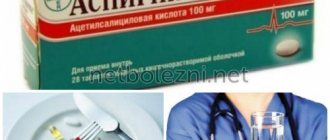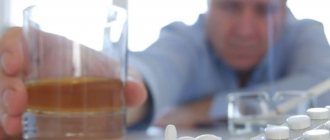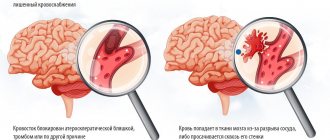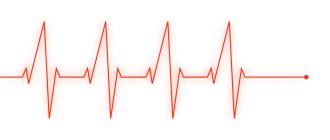More than once at an appointment I came across a situation where a patient without any obvious cardiovascular pathology prescribed cardiomagnyl (or thromboASS, cardio aspirin, etc.), being sure that absolutely everyone at his age (that is, “after 45 -50 years"), this is exactly the kind of prevention of cardiovascular diseases that is needed. After all, the neighbor also drinks, they say on TV that it’s necessary, and so on...
Is it really necessary?
The fact is that modern recommendations for the treatment of cardiovascular diseases (CVD) speak of the need for lifelong use of aspirin by those people who have already suffered any cardiovascular events. These include heart attack, stroke, transient ischemic attacks. As for the use of aspirin by people who do not have a history of any cardiovascular diseases, including those listed above, today the routine administration of aspirin (or other antithrombotic drugs) to such patients is not recommended due to the lack of evidence supporting First of all, the safety of such prophylaxis in this category of patients.
The most common side effect when taking aspirin is a negative effect on the gastric mucosa. Also, with its long-term use, the risk of bleeding of various localizations (gastrointestinal, hemorrhoidal, nasal, etc.) increases, and this fact cannot be neglected, because in certain situations such bleeding can become life-threatening.
In this regard, before prescribing aspirin to a patient, the doctor must assess the benefits and risks of taking it. In patients who have had a heart attack or stroke, the benefits of prophylactic aspirin have been shown to outweigh the possible risk of bleeding and are therefore recommended. And the role of aspirin in people who have no history of either one has not been fully studied. The scientific data that we have today indicate that there is no clear benefit from such prevention and, at the same time, an increased risk of bleeding of various locations. However, the issue remains poorly understood; large studies are ongoing, and we are waiting for their results.
As for patients of older age groups who have any risk factors for the development of cardiovascular diseases (arterial hypertension, high blood cholesterol, etc.), patients with diabetes mellitus, the situation is approximately the same: it has not yet been revealed that The benefit of taking aspirin outweighs the risk of bleeding in such patients, and therefore its use cannot be recommended routinely.
Composition and dosage forms
Paracetamol is a substance from the non-steroidal non-narcotic group of analgesics with a pronounced antipyretic effect. Available in several pharmaceutical forms:
- tablets for oral administration: contain 200 or 500 mg of the active ingredient, packaged in blisters or packaging without cells;
- capsules: hard shell 500 mg;
- syrup and suspension: sweetish-tasting liquid, contains 2.4% paracetamol (24 mg per 1 ml), packaged in glass bottles of 50 and 100 ml;
- 1.5 percent aqueous solution for infusion: colorless transparent liquid in ampoules of 5 ml;
- rectal suppositories: in a dosage of 50–500 mg, packaged in cell contour plates.
Side effects
Sometimes taking Aspirin can cause negative effects, these include:
- Pain in the stomach
- Decreased platelets in the blood
- Bronchospasm
- Various skin rashes
Taking Aspirin for a long time sometimes leads to the development of bleeding in the gastrointestinal tract. Signs characterizing this pathology:
- Anemia
- Tarry stool
- Weakness, excruciating abdominal pain
If the above symptoms appear, you should stop taking Aspirin and seek medical help.
Mechanism of action
The anti-inflammatory effect of the drug is insignificant. Paracetamol mainly acts as an antipyretic and a mild analgesic. A derivative of phenacetin inhibits the production of compounds in the body that are responsible for sensitivity to pain - prostaglandins. At the same time, it affects the thermoregulation centers, reducing high body temperature.
The drug helps with pain syndromes of various origins:
- neuralgia;
- myalgia;
- joint pain;
- algomenorrhea;
- renal colic;
- toothache;
- febrile conditions accompanying acute respiratory viral infections and other infectious lesions.
Paracetamol is quickly absorbed into the blood, does not accumulate in the body, and does not irritate the mucous membranes of the gastrointestinal tract. Metabolized in the liver. It is completely eliminated 4–5 hours after administration. The drug has a symptomatic effect: it relieves acute signs of diseases for a certain time, without affecting their intensity and duration.
Contraindications for Aspirin
Prohibitions on taking Aspirin are divided into two types:
- Relative
- Absolute
Taking Aspirin is strictly prohibited if you are allergic to acetylsalicylic acid or other non-steroidal anti-inflammatory drugs. In addition to all this, the drug should not be used if there is an increased tendency to bleeding.
Relative contraindications:
- Bronchial asthma
- Combined use of anticoagulants
- Breast-feeding
- Pregnancy
- Chronic stomach diseases
- Kidney dysfunction
- Diabetes
- Age up to 12 years
If there are relative prohibitions, taking the medicine is possible only after approval by the doctor.
Risk factors for thrombosis
Thrombosis occurs not only in older people, but also in young people. The reason for this is a number of factors that do not themselves lead to the formation of blood clots, but create all the conditions for this. The likelihood of forming blood clots increases in the following cases:
- overweight;
- passive lifestyle;
- forced bed rest for more than three days;
- varicose veins;
- recent myocardial infarction or stroke;
- use of oral contraceptives;
- fractures and injuries of the lower extremities;
- unhealthy diet, unhealthy lifestyle.
Blood thinners for injection
Direct anticoagulants are most often available in the form of an injection solution. Some are used only in hospitals, others are intended for self-administration by patients. At the moment, two drugs are most widely used.
Fraxiparine
Direct anticoagulant, low molecular weight heparin. Can be used by patients independently as prescribed by a doctor. It comes in a syringe with a small needle. It has a fast but short-lasting effect.
It is often prescribed by doctors for vein thrombosis; according to their observations, in most cases there is a pronounced positive dynamics and regression of the thrombotic process. The drug is potent and is prescribed with caution to elderly people, patients with low body weight, and severe arterial hypertension.
Heparin
One of the most common, frequently used direct-acting anticoagulants, widely used in hospitals for the treatment of patients with cardiovascular diseases, venous thrombosis, pulmonary embolism, and acute myocardial infarction.
Compared to other anticoagulants, it has a low cost, so it still remains the main drug in this group, despite the emergence of more modern analogues. It is practically not used at home due to the complexity of dosing, the injection form and the increased risk of bleeding.
To reduce the risk of thrombosis, in addition to blood-thinning drugs, agents may be prescribed to strengthen the walls of blood vessels and lower cholesterol levels. Considerable importance is attached to lifestyle - giving up bad habits, healthy eating, physical activity. The daily routine depends entirely on the person, and this is already a big step towards the prevention of thrombosis. But to prescribe the correct drug treatment, you need to consult a doctor.
Still have questions about protection against venous thrombosis?
Free consultation with AngioClinic specialists
Author
Salmina Daria Vladimirovna
Geneticist. Graduated from the Chelyabinsk State Medical Academy. She completed an internship at the Northwestern State Medical University named after I.I. Mechnikov.
Why are oral anticoagulants needed?
Anticoagulants are medications that reduce the activity of the blood clotting system and prevent excessive blood clots. Modern anticoagulants affect various parts of the blood coagulation process and are used for the prevention and treatment of arterial or venous thrombosis and thromboembolism.
Classification of anticoagulants
All anticoagulant drugs are divided into two large groups:
- direct anticoagulants (drugs prescribed by injection) that inhibit thrombin activity - direct anticoagulants;
- indirect anticoagulants, or oral anticoagulants (prescribed in tablet form), which interfere with the formation of prothrombin in the liver. They are also called vitamin K antagonists, or indirect anticoagulants.
Indirect anticoagulants
Vitamin K is a vitamin of natural origin, found mainly in green leafy vegetables (spinach, broccoli, lettuce) and enters the body with food. In addition, vitamin K is synthesized by bacteria in the intestines. The body uses vitamin K to make a number of proteins in the liver that are involved in blood clotting. Daily requirement of vitamin K: 0.03-1.5 mcg/kg/day (up to 105 mcg/day).
Table 1. Vitamin K content in foods (µg/100 g of product)
| Products | Vitamin K content |
| Green tea, leaves | 964 |
| Lettuce, green leaves | 850 |
| Chard, leaves raw | 830 |
| Cabbage leaf | 817 |
| Cabbage, raw | 487 |
| Brussels sprouts | 434 |
| Spinach, leaves raw | 383 |
| Spinach, fresh/frozen leaves, cooked | 360 |
| Black tea, leaves | 42 |
| Brussels sprouts, fresh, frozen | 289 |
| Raw chicory | 231 |
| Red leaf salad | 210 |
| Broccoli raw | 205 |
| Soybean oil | 193 |
| Broccoli, fresh/frozen, cooked | 192 |
| Green onions | 190 |
| Beans | 140 |
| Iceberg lettuce | 123 |
Oral anticoagulants, interfering with this process, significantly increase blood clotting time. However, oral anticoagulants do not thin the blood or dissolve existing blood clots, although they can stop existing clots from growing.
Normally, natural blood anticoagulants ensure that blood clotting occurs only when the integrity of the blood vessels is disrupted. However, in certain clinical conditions called thrombotic disorders, this same mechanism can lead to the unwanted formation of life-threatening blood clots called thrombi. In such situations, the action of anticoagulants helps prevent excessive thrombus formation.
If you have a blood clot or are at risk of developing blood clots, your doctor may prescribe anticoagulants (such as warfarin) to prevent blood clots as part of your treatment.
Classification of indirect anticoagulants
All indirect anticoagulants are divided into three main groups:
- monocoumarins – warfarin, marcoumar, sincumar;
- dicoumarins – dicoumarin, tromexane;
- indanediones – phenyline, dipaxin, omefin.
The most common indirect anticoagulant is warfarin, which is associated with the predictability of its action and stable anticoagulation rates.
Indications for the use of oral anticoagulants
The following main reasons for the use of oral anticoagulants can be identified:
- atrial fibrillation: a disturbance of the heart rhythm in the form of erratic contraction of the atria, which can lead to the formation of clots on their walls;
- mechanical heart valves: surgical replacement of damaged heart valves with their mechanical counterparts. In this case, the body reacts to the “foreign” mechanical valve and starts an unwanted blood clotting process.
1. Koertke H. et al INR Self-Management Following Mechanical Heart Valve Replacement Journal of Thrombosis and Thrombolysis, 2001;
9, 41-45. Approximately 75% of complications after valve replacement surgery are due to bleeding and thromboembolism, which can occur within the first year after surgery.
In patients with a mechanical mitral valve prosthesis, massive thromboembolism occurs at a rate of 4-12% per year. In patients with a mechanical prosthesis in the aortic position, this figure is higher.
2. Herijgers, P. et al Improving the quality of anticoagulant therapy in patients with mechanical heart valves: what are we waiting for? European Heart Journal 2007 28, 2424-2426.
Warfarin helps reduce these rates to about 1% and continues to be the most effective drug for most patients.
- Deep vein thrombosis: When blood circulation is slow, clots can form in the deep veins of the thigh or pelvic muscles.
- Pulmonary embolism: A clot that forms in the deep veins travels to the right side of the heart and travels through the pulmonary arteries to the lungs, where it blocks blood flow.
- Prevention of excessive blood clots due to genetic bleeding disorders.
- Stroke: A blood clot travels to the brain and causes sudden cessation of cerebral circulation.
- Myocardial infarction: Damage to the heart muscle from a myocardial infarction can cause blood clots to form in the ventricles of the heart.
3. Butchart EG Antithrombotic management in patients with prosthetic valves: a comparison of American and European Heart guidelines, 2009; 95: 430-436.
Aspirin Cardio or Warfarin?
Based on certain criteria (age and additional risk factors), the attending physician may prescribe patients with atrial fibrillation one of two options for antithrombotic drugs: antiplatelet drugs, such as aspirin (prevents platelets from sticking together) or anticoagulant drugs, such as warfarin (blocks clotting factors). blood):
- acetylsalicylic acid (aspirin) if the risk of stroke is low;
- warfarin, which is recommended for those at higher risk of stroke.
The pharmacological effect of aspirin as an anticoagulant is to inhibit the adhesion of platelets, the main component of a blood clot, thus acetylsalicylic acid prevents the development of thrombosis of blood vessels.
The indication for the use of aspirin for blood thinning is the presence of a transient cerebrovascular accident in the past - i.e. such a disorder in which neurological symptoms manifested themselves for no more than 24 hours.
Both drugs are taken in tablet form, but more careful monitoring of blood coagulation is required when taking warfarin. Therefore, today the typical solution for daily thrombosis prevention is long-term use of low-dose aspirin to thin the blood (Aspirin Cardio). But research suggests that warfarin is more effective in reducing the risk of stroke.
4. Hart RG et al. Meta-analysis: antithrombotic therapy to prevent stroke in patients who have nonvalvular atrial fibrillation. Ann Intern Med. 2007; 146 (12): 857-867.
In addition, the instructions for use of Aspirin Cardio for blood thinning separately indicate a significant list of contraindications. Also, any instructions for aspirin mention pronounced undesirable effects that develop with long-term use of aspirin to thin the blood, even in low dosages. With long-term use of acetylsalicylic acid, which is part of Aspirin Cardio, it is possible to develop erosions and ulcers of the gastrointestinal tract, thrombocytopenia (decreased platelet count), and increased levels of liver enzymes.
Aspirin tablets have no obvious advantages in terms of cost. The price of “aspirin for the heart” is quite comparable to the cost of treatment with warfarin. Even American aspirin for thinning the blood is far from a panacea.
Compared with no treatment, warfarin reduced the risk of stroke by 64%, which is almost three times more than taking the blood thinner aspirin (for more information, talk to your doctor, who can recommend the drug that's best for you) .
Figure 1. Warfarin and stroke risk
In some cases, indirect anticoagulant drugs need to be taken for several months, sometimes throughout life. The duration of the course is determined by the doctor.
Direct and indirect anticoagulants reduce blood clotting and therefore increase the risk of bleeding, so compliance with the dosage regimen is vital. Under no circumstances should you increase the dosage or shorten the interval for taking anticoagulants.
Monitoring the effectiveness of these drugs is also of paramount importance: a blood test called INR (international normalized ratio) helps determine the most optimal dosage of oral anticoagulants.
Chimes with depyridamole
This drug can be called mandatory for use by pregnant women after the 20th week of gestation. In the annotation you can read a phrase warning about possible risks. If a local obstetrician-gynecologist has prescribed a course of Curantil, this indicates that the woman is not at risk and can safely take a blood thinner.
The medicine accelerates the blood, allowing the expectant mother to share nutrients with the child. Taking Curantil will ensure the full development of the unborn baby.
Difficult choice: how to protect mucous membranes
The antithrombotic properties of acetisalicylic acid are a salvation for patients with the threat of thromboembolism, stroke, ischemia of the heart and intestines. And at the same time, constant use of the drug causes significant harm to the digestive tract, causing a number of complications.
Concerned with this issue, pharmacists around the world are working to create drugs. which will not cause harm to health with constant use, while maintaining the beneficial properties of acetylsalicylic acid. Developments are progressing well, and several generations of safer connections have been released.
One of the most modern and safe for health preparations of acetylsalicylic acid, which fully preserves the antithrombotic effect, is Fazostabil. Antacid effect. protecting the mucous membranes of the stomach and intestines, achieved with the help of Magnesium hydroxide . Compared to Aspirin, the frequency of adverse reactions to the drug is significantly reduced.
prescribe a dosage schedule and minimally effective dosages of Fazostabil to prevent thrombosis and reduce the risks of pathologies from the cardiovascular system.
To monitor their health, patients taking acetylsalicylic acid for life should be regularly examined by a cardiologist and gastroenterologist, self-monitor for changes in blood pressure levels, and undergo annual blood tests to monitor fibrinogen and clotting factor levels.
How medications help with vein thrombosis
All drugs prescribed for the prevention and treatment of venous thrombosis have a blood-thinning effect, since one of the main causes of the disease is increased blood clotting. They cannot miraculously dissolve existing blood clots, but they do prevent them from enlarging and forming new clots. Medicines to reduce clotting may have different principles of action, but give approximately the same effect. They are taken in courses or on an ongoing basis at the discretion of the attending physician.
Blood thinning medications are selected based on tests, diagnosis, and patient characteristics. Self-medication in this case is unacceptable, as it can lead to serious consequences. One of the main side effects is the risk of bleeding. More often it is minor and manifests itself in the form of bruises and nosebleeds. But an incorrectly selected drug and its dosage can lead to more serious consequences requiring hospitalization.










